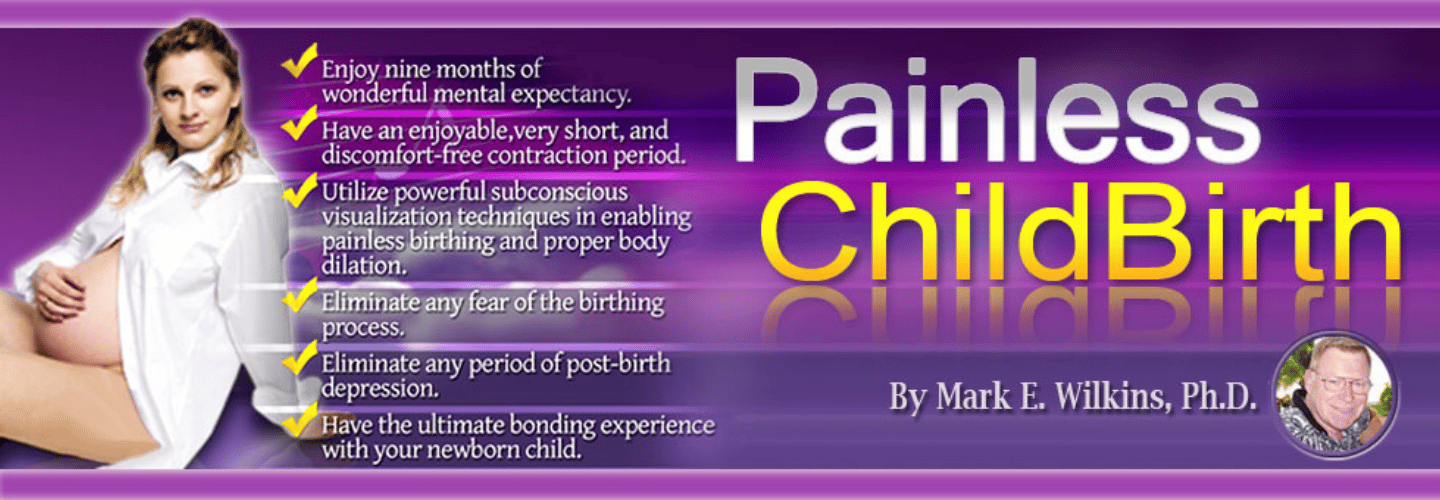
Using Hypnosis Childbirth Modality
Using hypnosis childbirth modality includes celebrities from Jessica Alba to Kate Middleton have supposedly used hypnosis and related techniques to prepare for labor and delivery, ease feelings of fear, and naturally manage pain. Hypnosis during childbirth? Yes. It is real.
Let’s take a closer look at this method, its benefits, and how it differs from other birthing methods you might encounter.
What is Using Hypnosis Childbirth Modality?
On its own, the term hypnosis means “a procedure during which a person experiences suggested changes in sensation, perception, thought or behavior.” One particular version of hypnosis during the birthing process is referred to as Painfree Childbirth Program.
At its core, Natural Painfree Childbirth Program aims to help a woman deal with any fear or anxiety she may have around birth. It involves various relaxation and self-hypnosis techniques to help relax the body before and during labor and birth.
The idea is that when the body and mind are in a completely relaxed state, birth can happen more quickly and painlessly because the body doesn’t fight the natural process.
How Hypnosis Works
“With HypnoBirthing program, I was able to truly empty my mind and breathe my way into birthing our baby,” shares Iradis Jordan, who chose the method for her baby’s delivery. “It allowed my body to relax to the point where any pain was dimmed out. I felt my body respond how it was meant to.”
Again, relaxation is the name of the game with Hypnosis. You learn to go into the somnambulistic state with key words and relaxation learned in self-hypnosis sessions prior to the deliver.
But during all the potential chaos of contractions, how can you possibly get into a Zen-like state? Well, there are various techniques to try, like controlled breathing.
Controlled breathing
The Bradley method shares two such breathing techniques. In the first, you breathe deeply in through the nose and out through the nose. Breathe in to the count of four and out to the count of seven.
The second technique is similar. You follow the same deep-breath pattern, but you lengthen the inhale to the count of seven and keep the exhale to the count of seven. Breathing in this way is supposed to help trigger your parasympathetic nervous system, giving you some calming vibes.
A focus on positive thoughts and words
Focusing on positive thoughts and words is another useful technique. Instead of using the word “contraction” to describe the tightening during labor, you might say “surge” or “wave” for a more positive spin. Another example is replacing “rupture” of the membranes with the word “release.”
Guided visualization
Other techniques include guided visualization, where you might picture something like a flower opening to help relax your body, and using music and meditation to further relaxation.
Through using these techniques, the idea is that you may give birth in a state similar to daydreaming. You may:
- be fully aware of what’s happening to you and able to come and go out of hypnosis as you please
- become more relaxed, keeping your body out of the fight-or-flight mode that can be induced by the unfamiliar environment of a birth room
- be more able to manage pain and stress hormones by the release of endorphins
By controlling pain and stress hormones, the body may let go and submit fully to the task ahead.
Different Hypnosis Child Birthing Methods
HypnoBirthing is also referred to as the Mongan Method. It’s considered the “original” method and involves five classes that are 2 1/2 hours long, totaling 12 hours of instruction.
The main idea with this method is that severe pain doesn’t have to be a part of labor if the body is relaxed. Participants learn different self-hypnosis and relaxation techniques, including guided imagery and breathing.
Painfree Childbirth program is another method of using hypnosis during the birth process. Developed by Clinical Hypnosis Expert Mark E Wilkins, Ph.D. It’s based on the Painless Childbirth Program, which was developed by master hypnotherapist Gerald Kein.
While similar to HypnoBirthing, this method has some key differences. It focuses on specific tactics to help with pain versus relying on simple relaxation techniques. These tactics include things like hypnotic compounding (repetition) and somnambulistic (sleepwalking) hypnosis techniques.
Benefits of the Hypnosis Modality, according to proponents
“I enjoyed your hypnosis program for a painless childbirth. It really helped ease my anxiety throughout my pregnancy, I used it during my labor and it was a very short labor and easy delivery. Sincerely, Jessica S. (and baby Irene).”
Along with confidence in the birthing process, Painfree Childbirth Program may:
Shorten labor.
Specifically, hypnosis during birth may help shorten the first stage of labor. This stage involves both early and active labor, when contractions become longer, stronger, and closer together as the cervix dilates.
Lessen the need for interventions.
A 2011 review of studies showed that hypnosis may help encourage a vaginal birth and women using hypnosis didn’t require as much augmentation with oxytocin. A 2015 study found that just 17 percent, Trusted Source of birthing moms using hypnosis had cesarean deliveries compared to the general 32 percent rate in the United States.
Naturally manage pain.
If you’re looking for a med-free labor, hypnosis may help. In one 2013 study, 46 out of 81 participants (51 percent) didn’t use any pain medication and reported their max pain level as just 5.8 on a 10 scale.
Give a feeling of control.
Women in the 2013 study also reported feeling more relaxed and in control. As a result, they had less fear about labor and birth.
Result in healthy babies.
Apgar scores, the system to evaluate babies in the minutes after birth, may be higher among babies born using Painfree Childbirth with hypnosis techniques.
- Help women who’ve experienced trauma. Hypnosis birthing modality, may particularly help birthing people who have experienced trauma surrounding birth or who have a general fear of labor and delivery.
Conclusion
Take a look at the Natural Painfree Childbirth Audio Program. You can start as late as the 7th month and get full benefits of the program. This is a mp3 download and you can work at your own speed and when it is convenient for you to be in a quiet place and relax.
Support is available if you need additional assistance, and if you want to use the program for your birthing but unable to pay for the course, there is a fund set up to assist those women, so you can enjoy the whole birthing experience in a drug free, trauma free environment.





